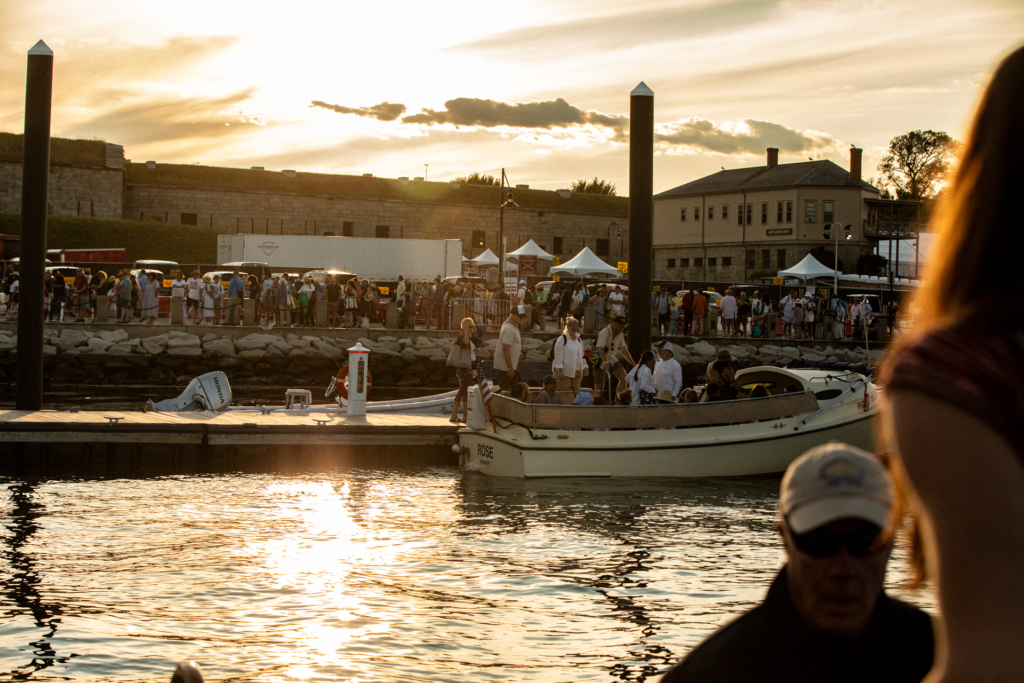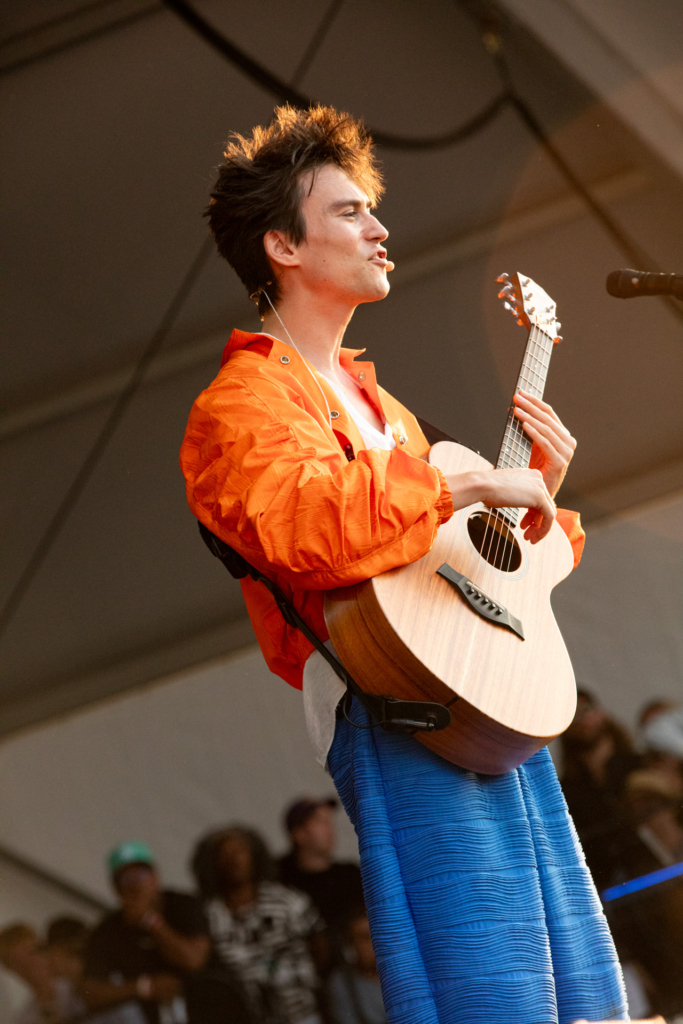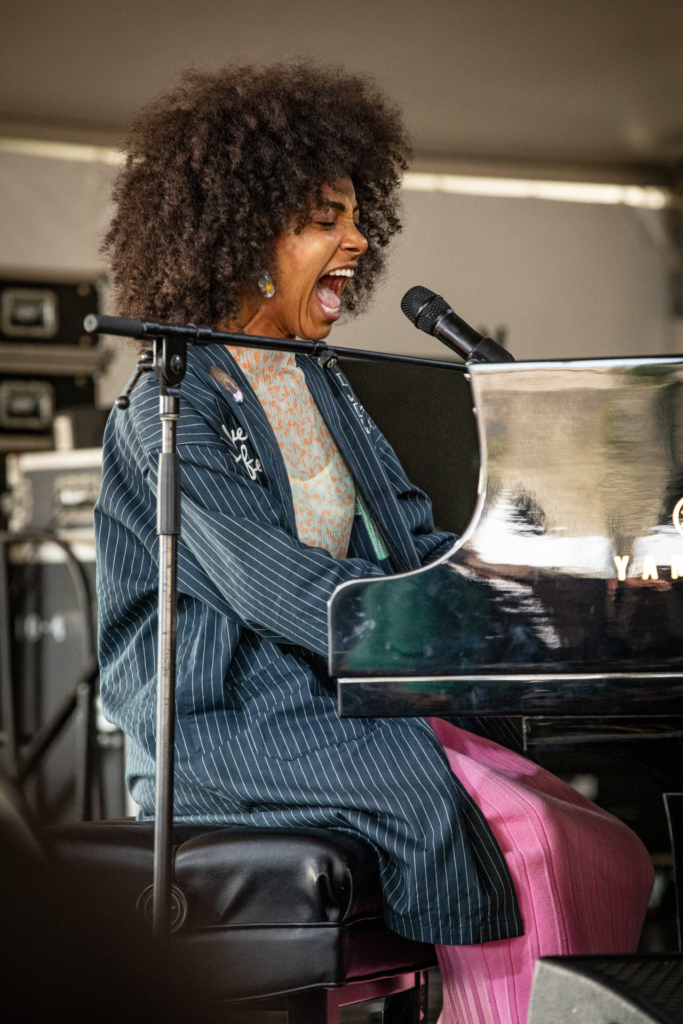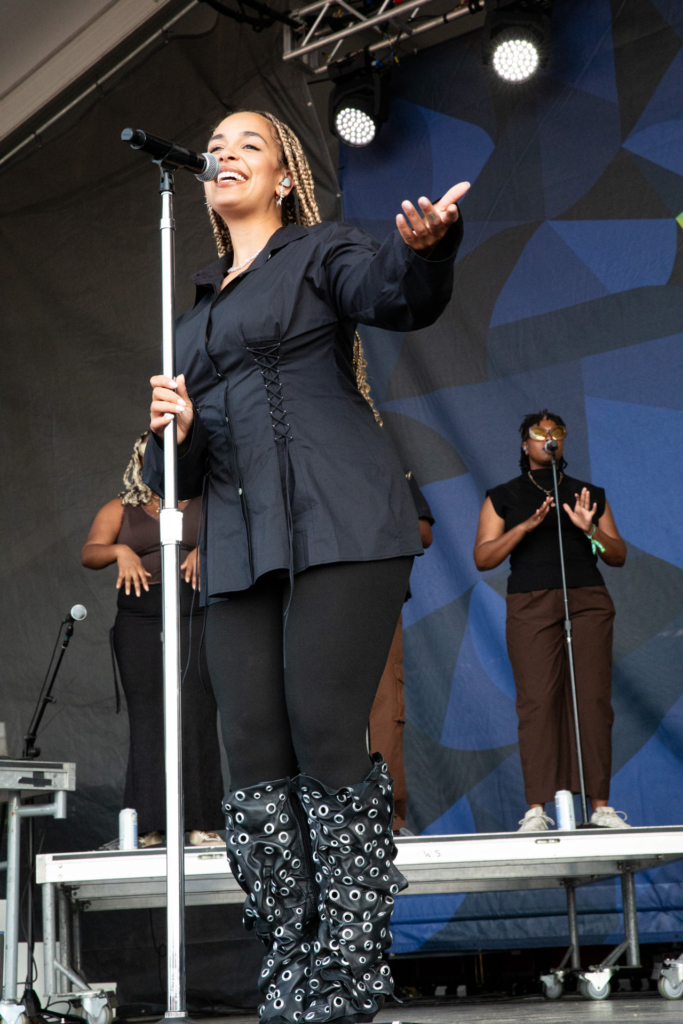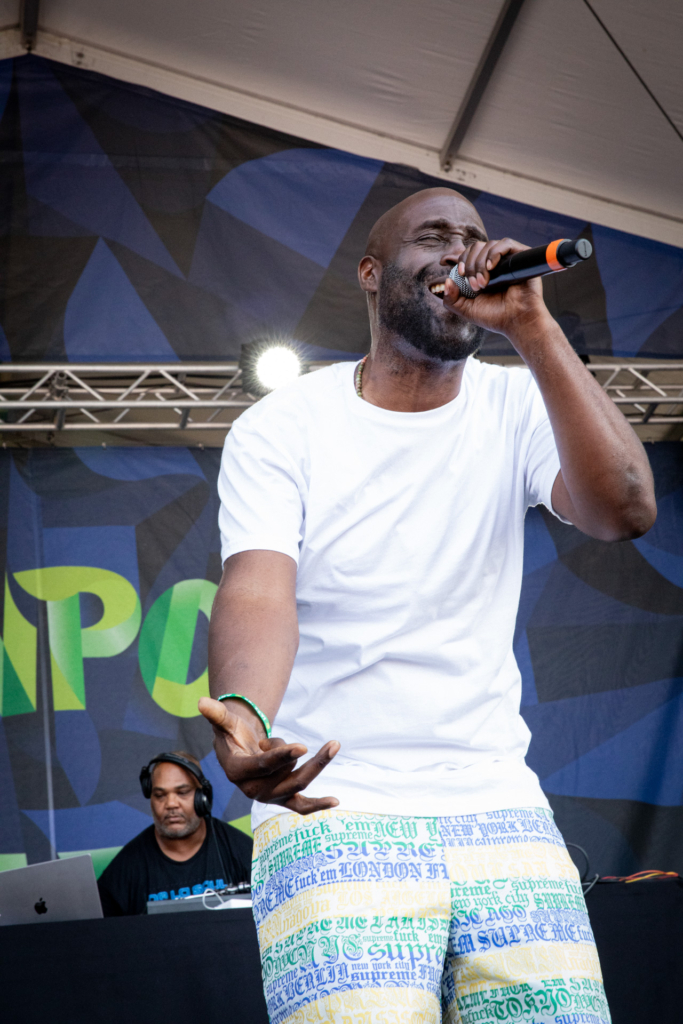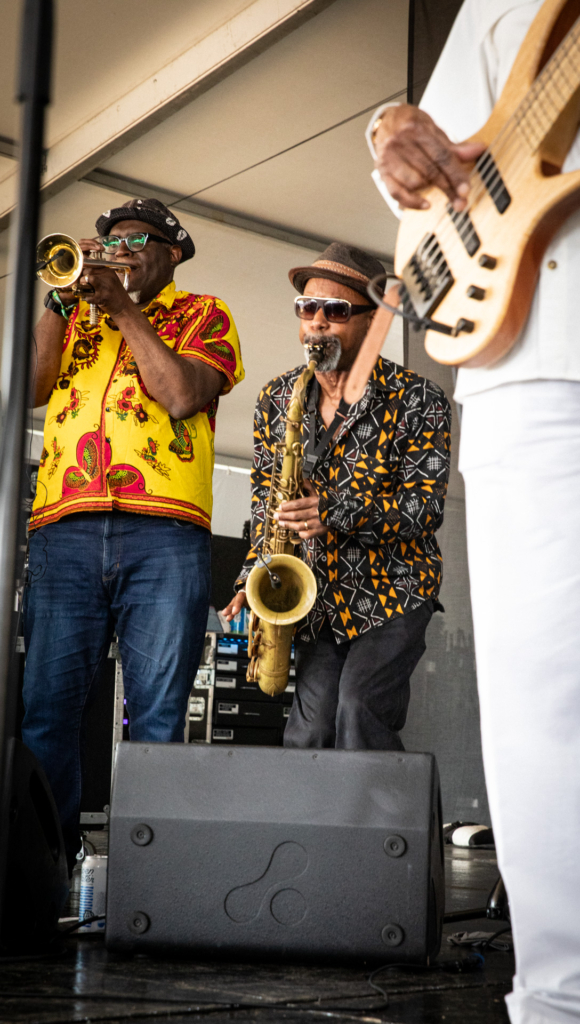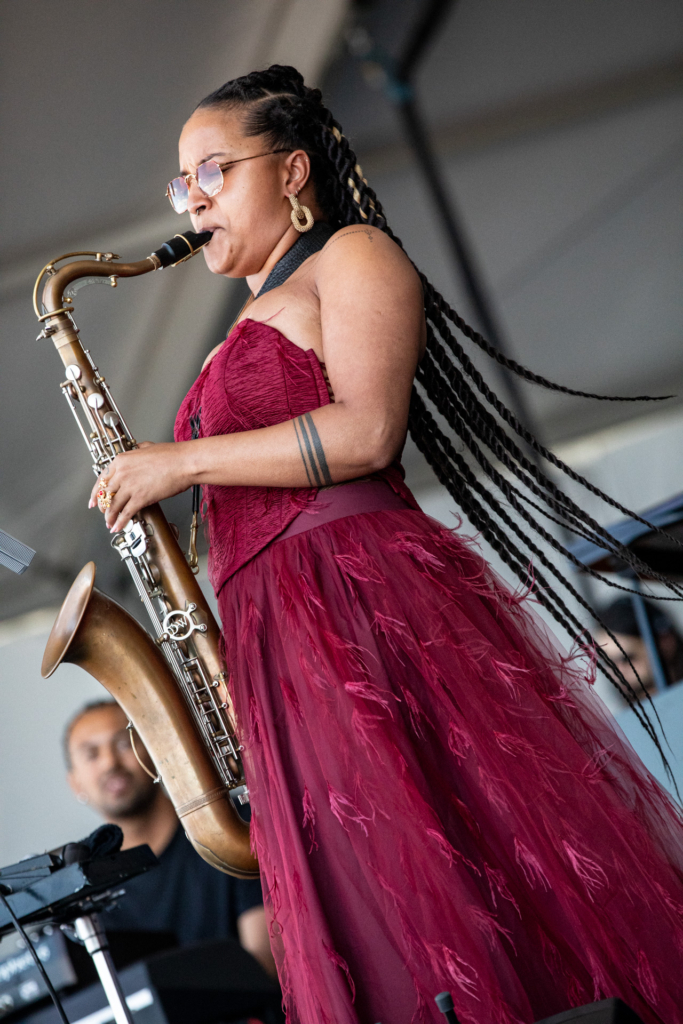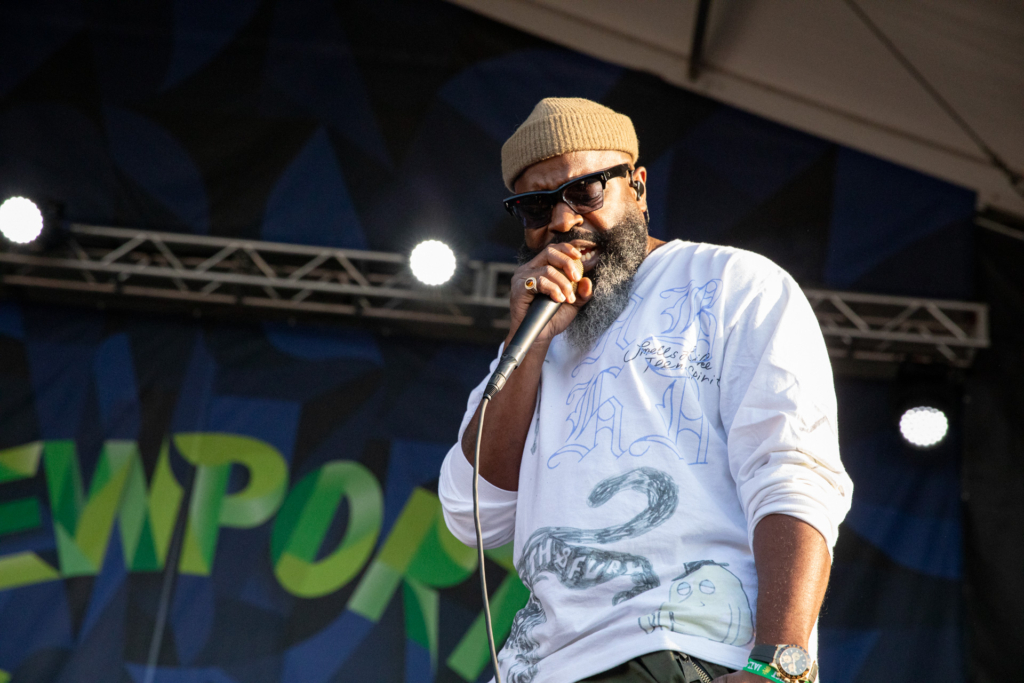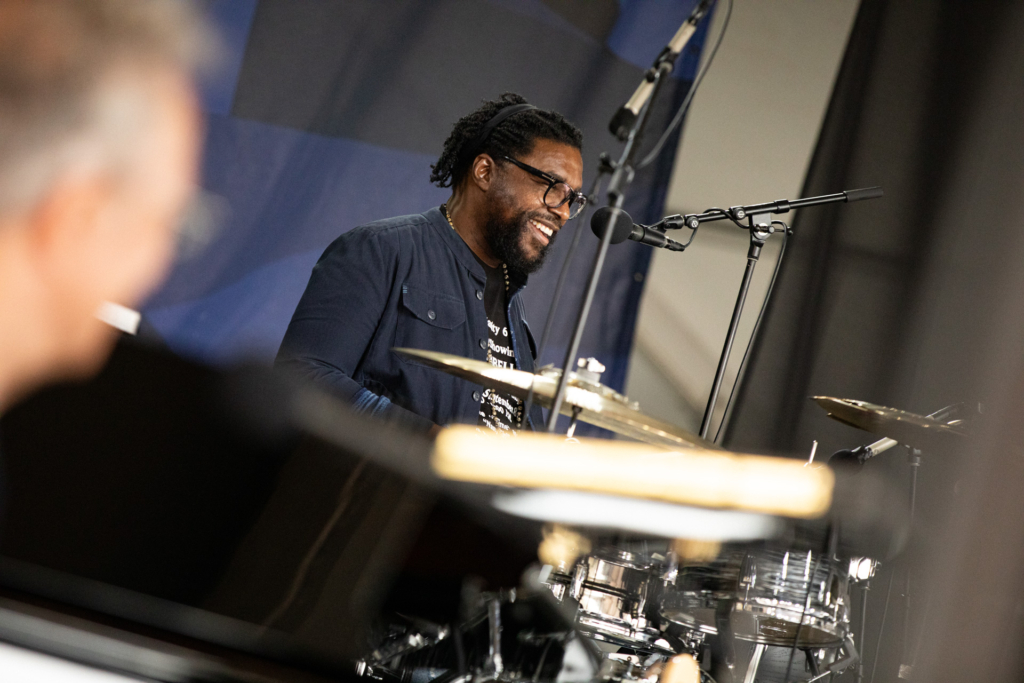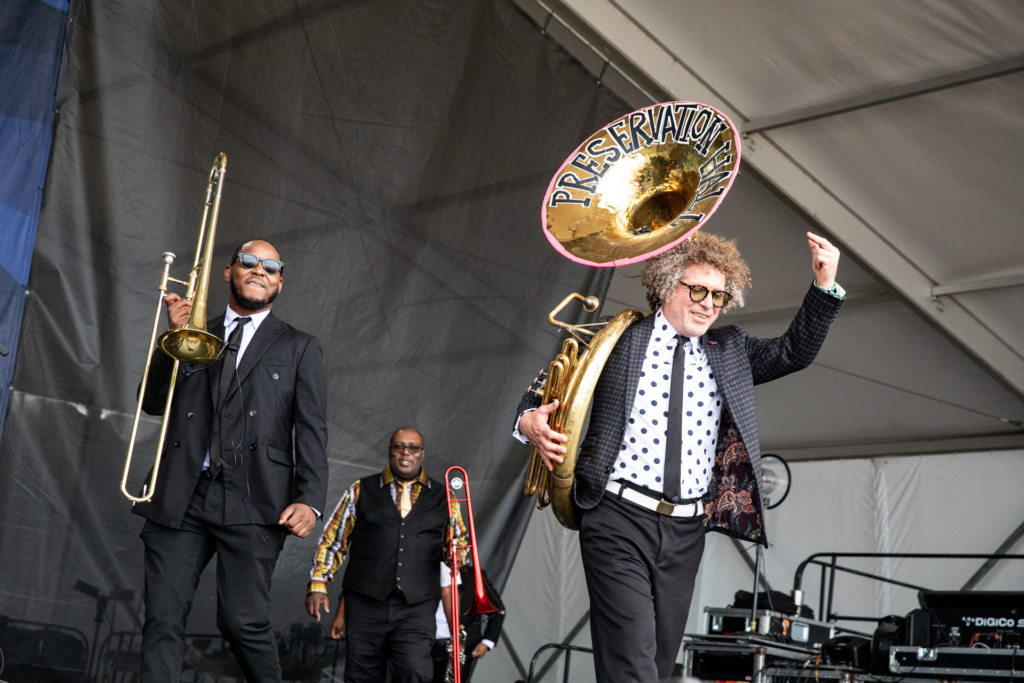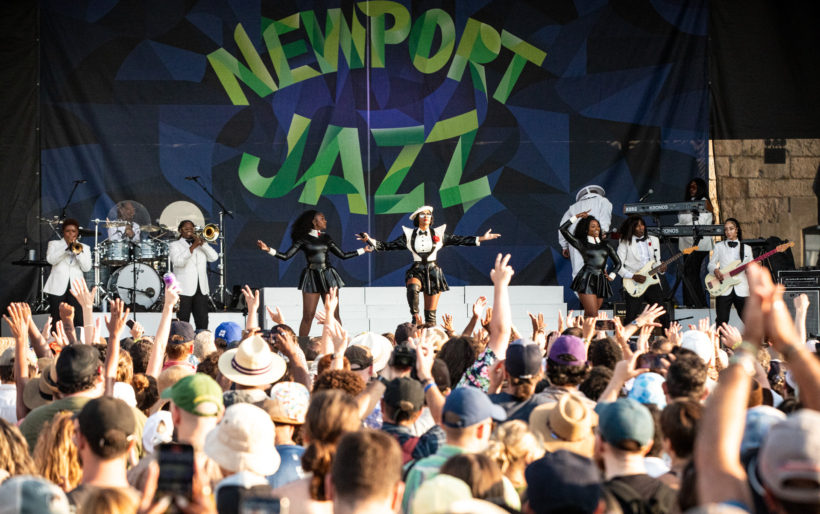
Janelle Monae at Newport Jazz Festival | photo by John Vettese for WXPN
The “soul-filling” experience of Newport Jazz Fest
The legendary festival is at once expansive and intimate.
Newport Jazz Festival has spent seven decades proving that tradition and innovation can share the same stage.
The legendary festival took place at Rhode Island’s Fort Adams State Park the first weekend of August. Similar to its folk cousin, which happened at the same site in July, Newport Jazz honors the roots of its focal genre while also pushing it forward in exciting directions.
This year’s lineup featured legends like Ron Carter, the 88-year-old collaborator of Miles Davis and Herbie Hancock, and a player who is considered the most-recorded bassist in jazz history. It also featured up-and-coming artists like dazzling UK saxophonist Nubya Garcia, showcasing cuts from her sophomore album Odyssey. Hip-hop was in the mix courtesy of De La Soul and The Roots, and pop-leaning singer-songwriters Janelle Monáe and Jacob Collier appeared as well. And then there were those artists that defy categorization, like Flying Lotus, an electronic soundscaper and producer whose music touches on atmospheric ambient, big beat EDM, and more. (For jazz cred, his great aunt is the late Alice Coltrane, and he cites her music as an inspiration on his own.)
It’s a heady mix, and the prospect of seeing such a thrilling array of acts in one space brought out enough of a crowd that Newport Jazz had its second sold out year in a row. Shawn Cephas is one of the music aficionados who made the pilgrimage. The owner of the Phoenixville independent record store Forever Changes attends Newport regularly; it’s his one vacation of the year, and he calls it “soul-filling and refreshing.”
“I love the people,” says Cephas. “Just the amount of different types of people and cultures. Every version of humanity’s here and I love it. And of course the music is unbelievable.”
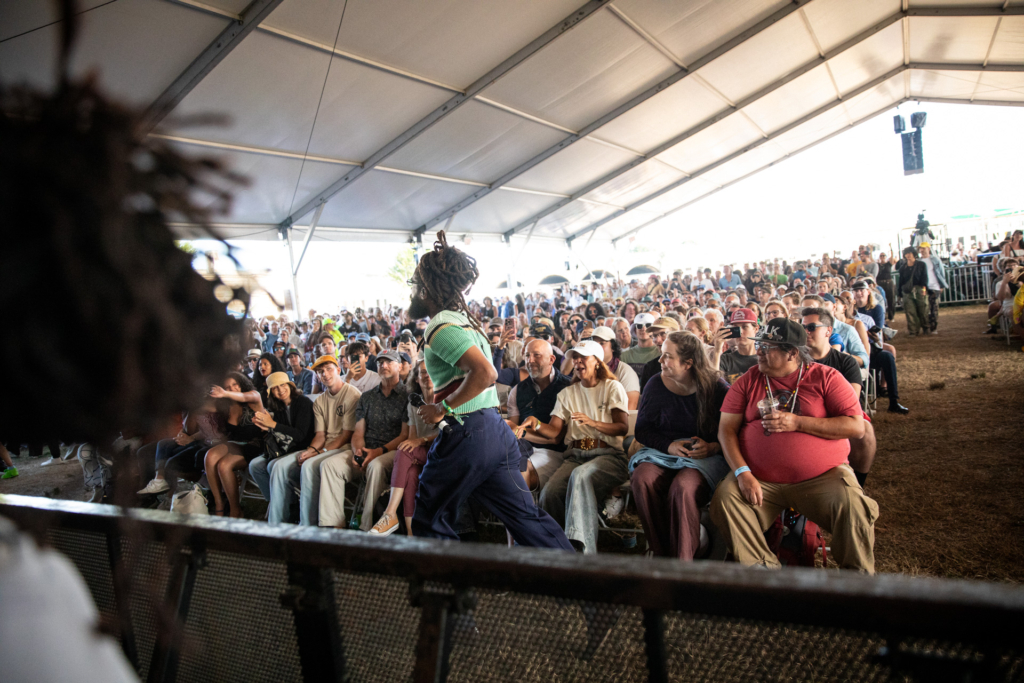
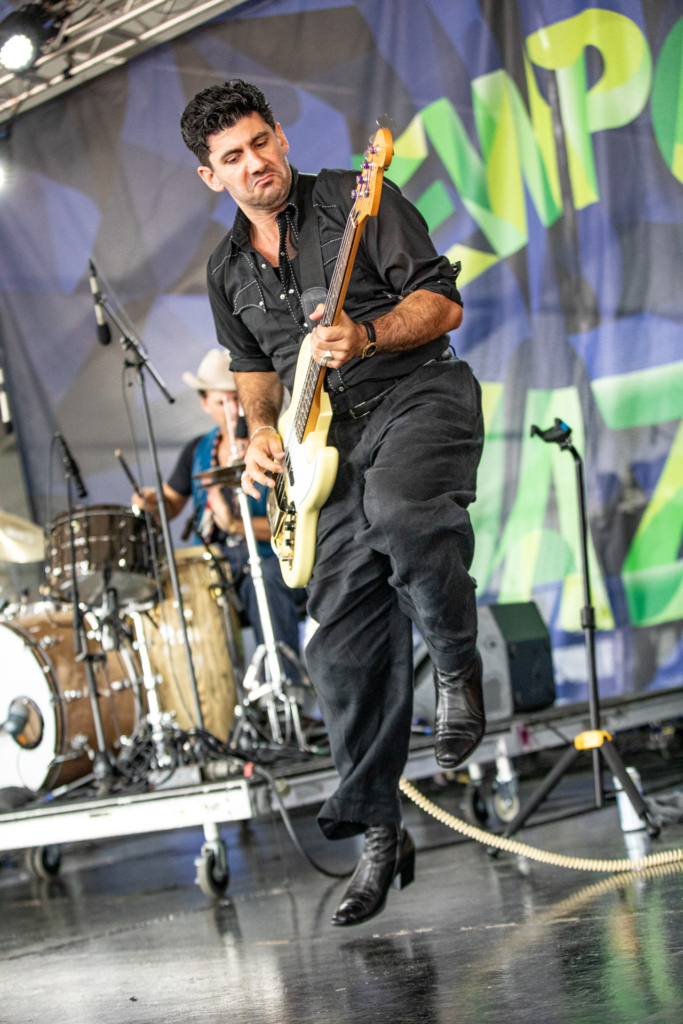
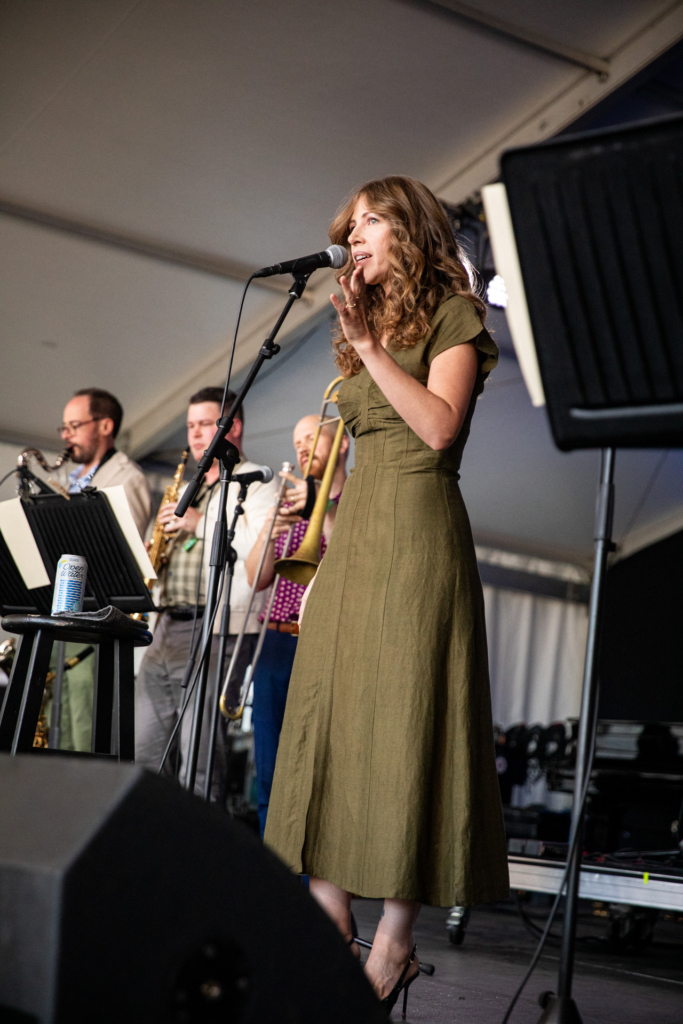
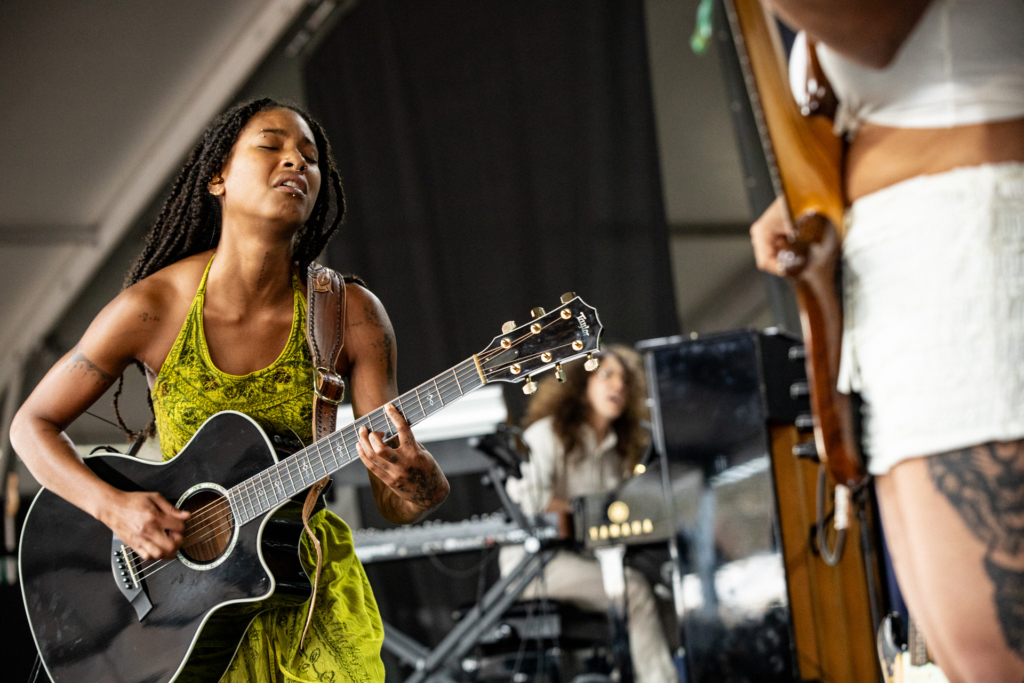
Fort Adams sits on an isolated cape just a short water taxi ride across Newport Harbor, surrounded by greenery and water. The towering cement walls of this 19th century military installation wrap around the grounds, with three stages nestled within; the Quad Stage on the interior, the Fort Stage on the exterior, and the Harbor Stage on the midway, at the end of a promenade of food vendors and crafters.
The tall stone structure, combined with tasteful amplification, minimized sound bleed from stage to stage; festival artistic director Christian McBride performed on the Fort Stage with his 15-piece big band, an explosive sound that was barely noticeable over at the Quad, where Los Angeles cinematic groove trio La Lom performed. Similarly, the London soul singer Raye — a breakout set on the festival’s first day — gave a massive performance to throngs of devotees waving signs on the Fort Stage, but if you ducked into the Harbor Stage to hear Lake Street Dive’s Rachael Price play Tin Pan Alley-style tunes with collaborator Vilray, you might not even hear the big event down the way.
This is the magic of Newport Jazz; so much good music is in the air, you could be wandering from point A to point B and pass multiple sets beckoning you to stop in; I experienced this on the way to a photo-editing break, where the wildly eclectic Knower’s set on the Quad kept me from getting work done in the best way.
“About three years ago, that happened with Adi Oasis,” says Cephas. “We were literally going through to the beer garden and my wife Anna was like, wait, we need to stop. It was incredible. And like now we’re insane fans of Adi Oasis.”
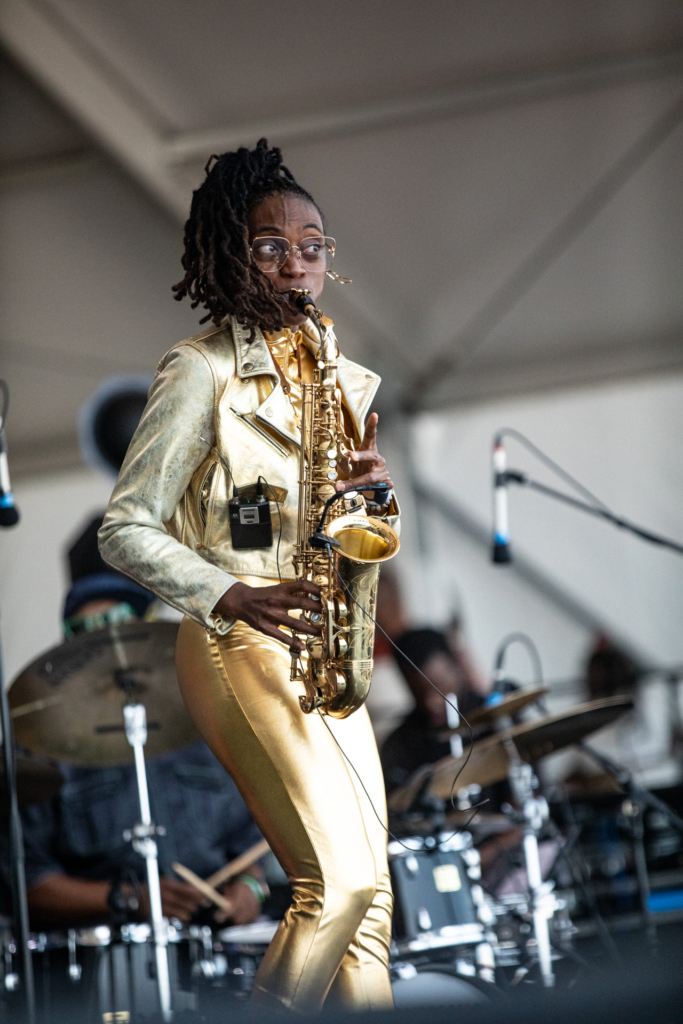
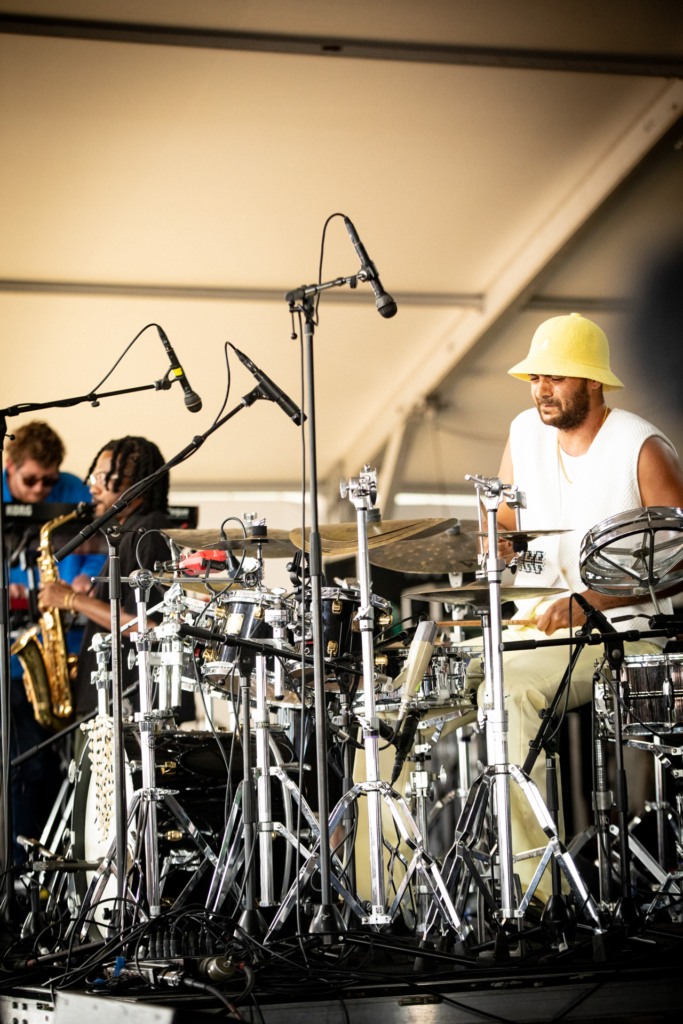
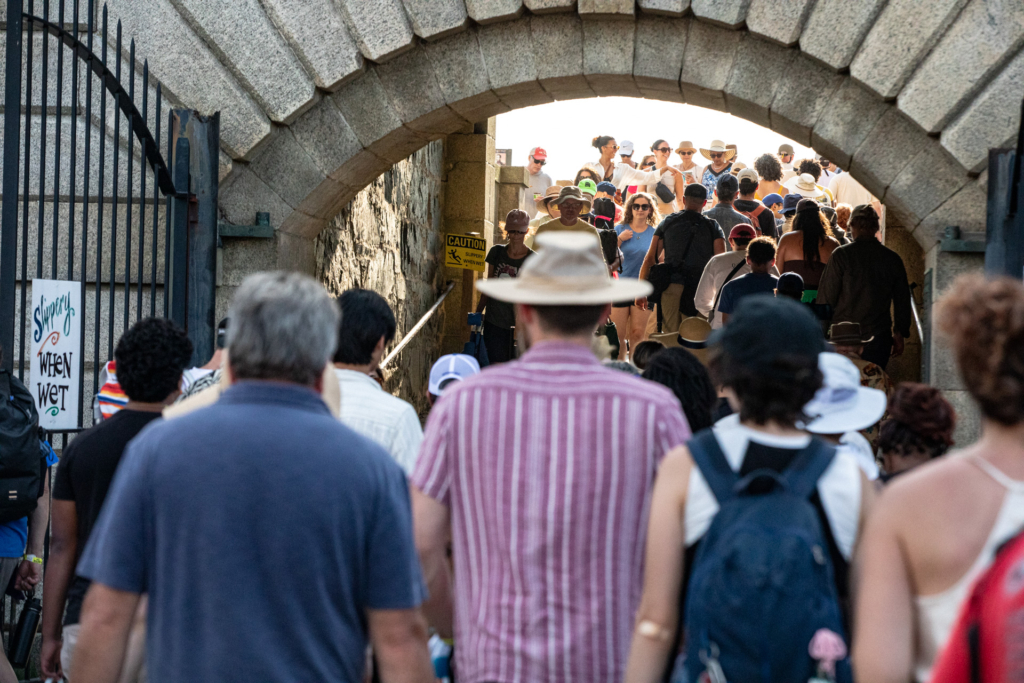
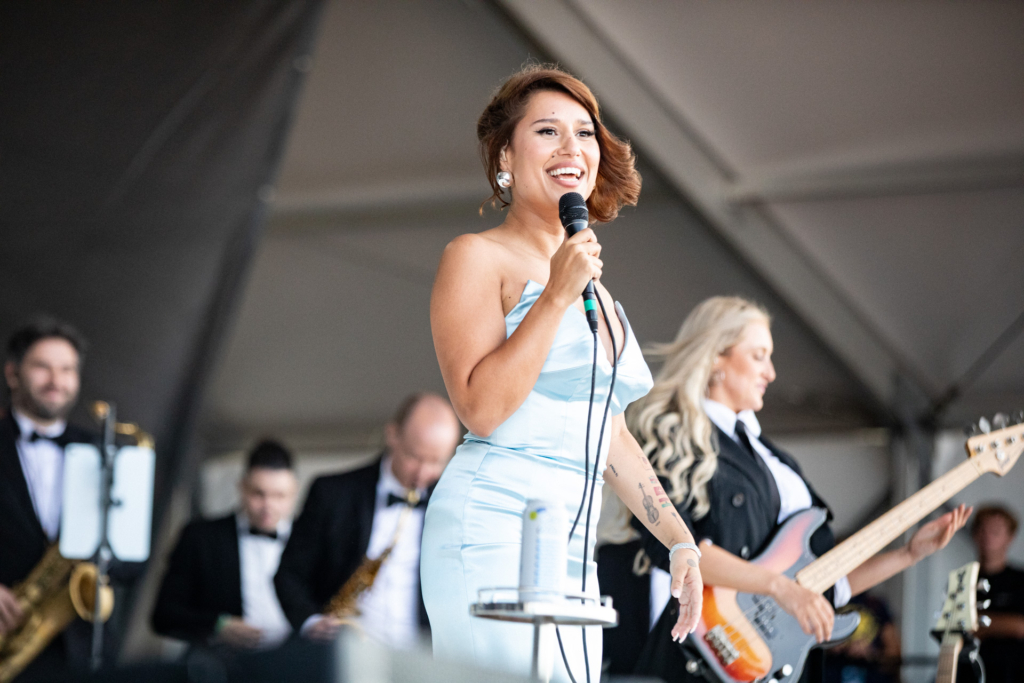
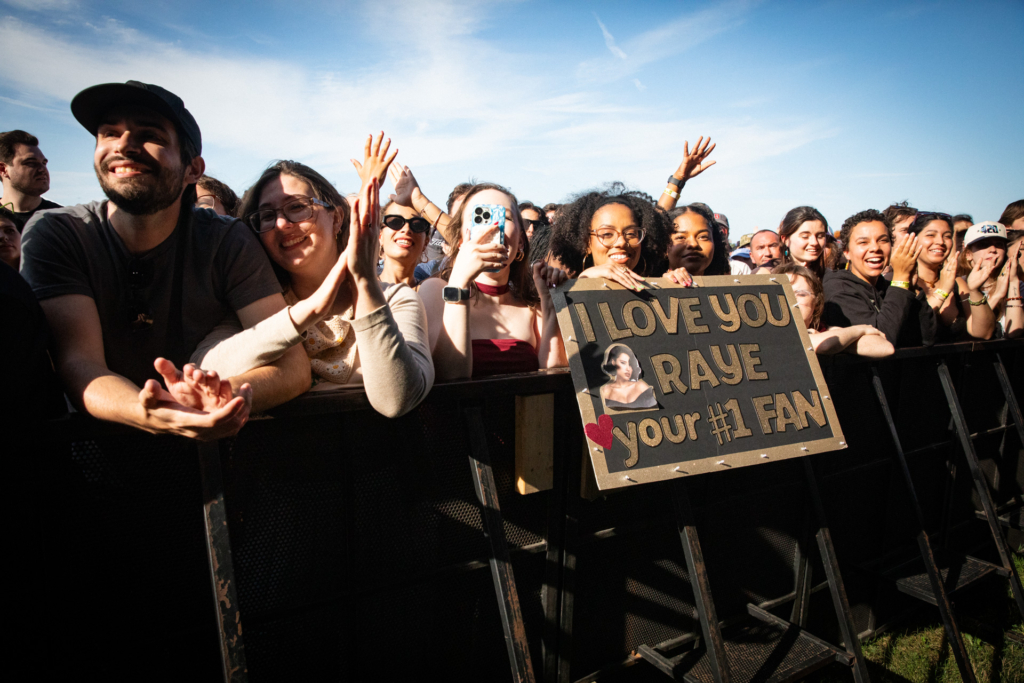
The festival offered plenty of traditional and contemporary jazz on its lineup; it also went well outside the box. But Cephas points out that with the pop-oriented bookings, like Monáe and Collier, and even a set by Willow — the wildly-eclectic pop-punk fueled project of Willow Smith, daughter of Will and Jada Pinkett Smith — you can tell that the jazz underpinnings are there, in melodies and arrangements and presentation. With hip-hop artists, like The Roots and De La Soul, the genres are even more firmly interconnected through sampling and (in The Roots’ case) instrumentation.
“And I mean technically, in my store, Flying Lotus is in my jazz section,” Cephas says. But he also points to the classic music documentary Jazz On A Summer’s Day, which depicts the scene at the 1958 Newport Jazz Festival.
“Chuck Berry’s there. And now we know that’s rock and roll, but in ’58 it was still being defined,” Cephas says. “It was more like, okay, this is Black music that we’re not sure what it is yet.”
In the same doc, Cephas says, the iconic pianist and composer Thelonious Monk is performing, and the film cuts to a crowd that appears oddly indifferent; Cephas compares it to Stan Getz’s take on the Miles Davis album Bitches Brew: “‘It’s not jazz, it doesn’t swing.’ And now that’s one of the most influential albums of all time.” Whether it’s intended to expand horizons or bring in new crowds, for his part, Cephas loves the work Christian McBride has done in curating Newport Jazz since stepping into his role in 2017. “It’s not like, you know, Dave Matthews is here. But everything is adjacent.”
Speaking via phone in the aftermath of the festival, McBride says jazz-adjacency might be becoming more common at festivals, but it’s nothing new. “In 2025, there’s no such thing as having a jazz festival that’s going to have 45 to 50 acts that are going to be primarily acoustic, straight-ahead jazz. It’s just not going to happen.”
While on the one hand, it feels right is to praise McBride for taking the festival’s curation in unexpected directions while preserving its spirit, he views his role almost as the opposite: making sure that the core of the festival, straight-ahead jazz, remains intact.
“That’s why we had Terence Blanchard, that’s why we had Kenny Garrett, that’s why we had Ron Carter, that’s why we had Diane Reeves,” McBride says. “I don’t know if this is as much a concept of what non-jazz things get put in, as much as what jazz stays in and always stays in. I think a lot of times, people don’t see that. They just see what they don’t recognize.”
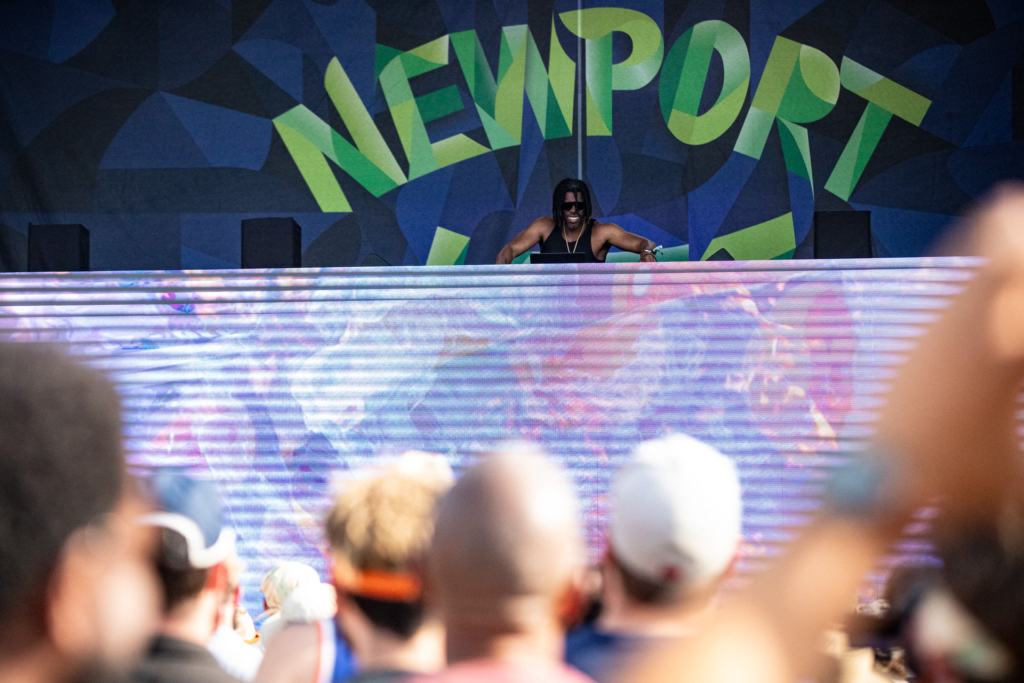
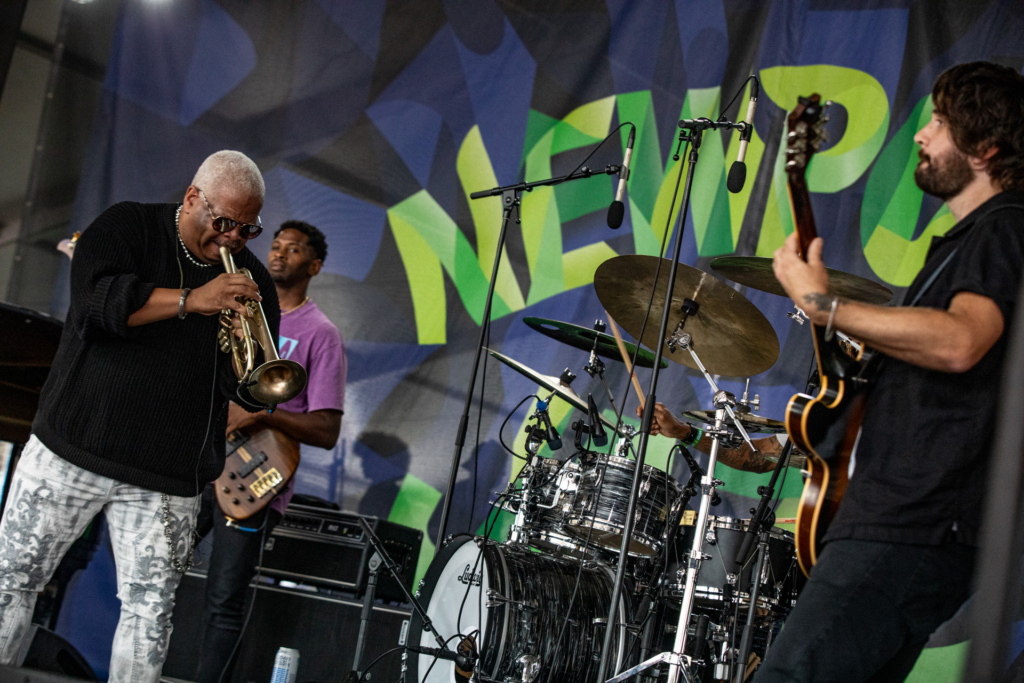
For attendees, that full spectrum of artists and genres is what brings them out to Newport, as well as the festival’s more experiential elements. Cephas travels to Newport every year with his spouse, Anna Spackman, a singer-songwriter from Phoenixville. She says what keeps her coming back to the festival is the sense of timelessness: implicit and explicit callbacks to artists who came before.
“You hear, standards, you hear samples, you hear artists say what their influences are,” Spackman says. “But then there’s also a sense of passing that onto the next generation.” It creates “a renewed sense of purpose” for musicians, Spackman says, and she also notes that “for a genre born out of struggle and suffering, there’s so much joy and interconnectedness that you feel every time you see any artist on stage. It makes me feel grateful to be an artist.”
Karlia, a neo-soul inspired singer-songwriter from Philly, attended her second Newport Jazz Fest this year, and said she looks forward to the variety. “You can see some of the jazz OGs, some current and popular artists, and then the up and coming as well,” she says, adding that so much of the crowd being present and in the moment at Newport is a relief from the constant online nature of daily life. “I think it’s really important, especially as an artist in this era of music that’s very social media driven, that we’re reminded that there are these communities of artists and listeners that are here to really enjoy and celebrate the music.”
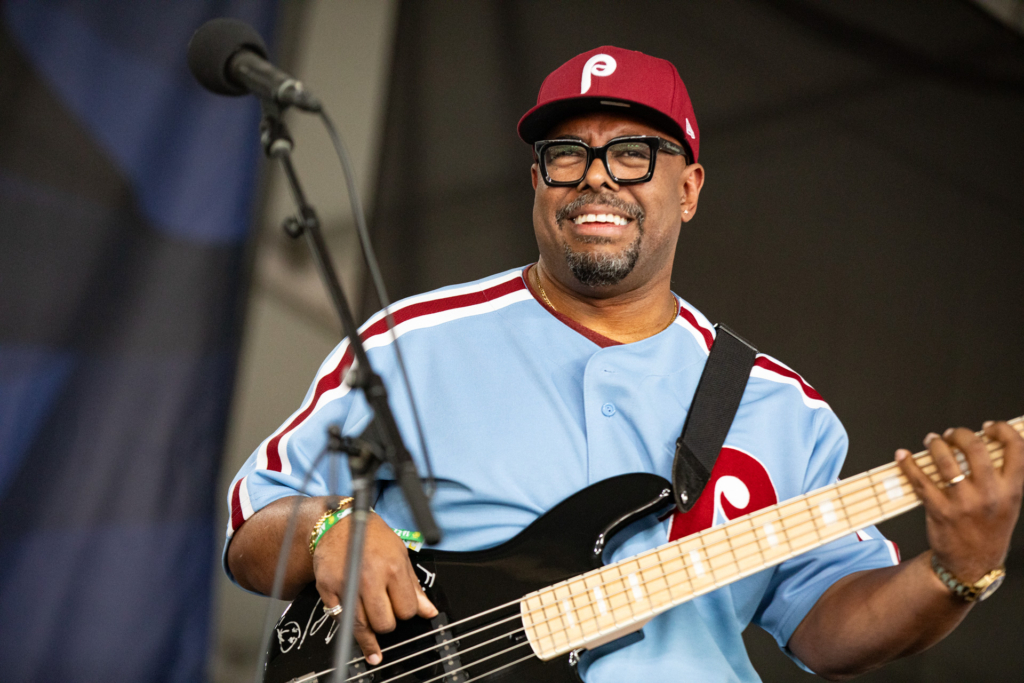
Dylan Itkin is a drummer in several Philadelphia acts, including the eclectic indie combo Wescansin — a band that’s been known to cover Steely Dan from time to time. His family lives in Providence, and he visits every year on Jazz Fest weekend to take a ferry ride to the Fort. Itkin agrees that the variety and cross-generational array of bookings is a big draw. “They got Ron Carter, so many legends, but then also the new school: Kiefer, Yussef Dayes. There’s a huge global influence from so many international artists. But then it’s also been really cool to see a lot of Philly in Newport with Christian McBride, with his big band and then playing with Questlove in The Philadelphia Experiment, and The Roots headlining day one.”
The Philadelphia Experiment is a project that Roots drummer Ahmir “Questlove” Thompson and McBride — two graduates of the Philadelphia High School for the Creative and Performing Arts Class of 1989 — founded 25 years ago along with veteran Philly keyboardist Uri Caine. On their sole album, released in 2001 on Ropeadope Records, they paid homage to the city’s music legacy on originals like “Grover” (for Grover Washington Jr.) and by covering Philly-rooted composers like Sun Ra and Sherman Ferguson (the latter’s groovy “Ife Ife” was a centerpiece of their Newport set). The record also featured the late Philly jazz guitarist Pat Martino; live, they also feature turntablist textures from DJ Logic.
Seeing The Philadelphia Experiment on a sunny afternoon at Newport was a rare treat; they’ve only ever performed live six times over the years (their members are all, understandably, quite busy) including a previous gig at Newport the first year McBride curated. He chuckles when I ask about this.
“I think my first year as artistic director, in 2017, I remember Nate Chinen wrote an article [for The New York Times]. And he had made it a point to talk about how many Philly people I brought to the festival that year. I honestly was unaware of that. It just so happens the baddest cats in the world come from Philly!” But he doesn’t keep an overly strict eye on making the festival Philly-centric; this year, with The Roots being on the bill, getting The Philadelphia Experiment back together “felt like something I had to do.”
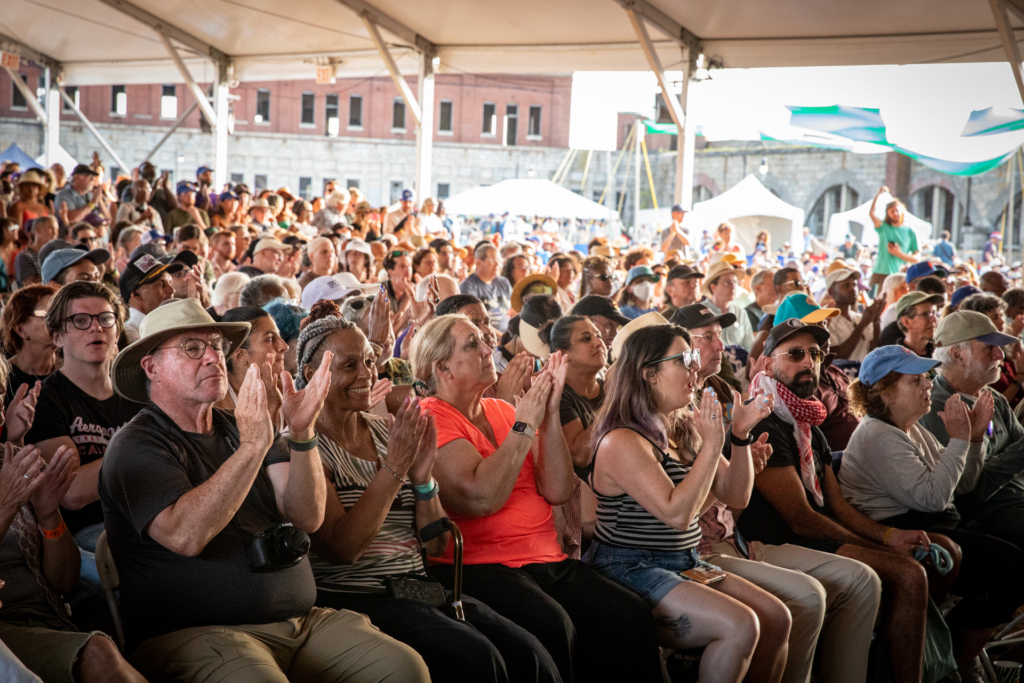
With year 71 under its belt, Newport Jazz continues to evolve and grow. It’s impressive that the event can pack so much into a single weekend — pop stars, jazz legends, dozens of acts every day — while still feeling relatively intimate. McBride said that sort of intimacy comes naturally, though.
“Because just the way the Fort is set up, it’s going to be intimate. It’s never going to be too big. You know what I mean? And I think that’s one of the things that makes jazz, or improvisational music so incredible. The chances are you’re not going to see it in huge arenas or huge stadiums.”
McBride says he and his team have no plans to let Newport Jazz get so big that people can’t actually enjoy it. “It’s already a big enough challenge having three stages going simultaneously, because, you know, everybody wants to see a little bit of everything,” he says. “You see some festivals where they have like eight stages going simultaneously. That can be sensory overload. So I think we’re happy with where it is.”
Cephas says he’s been to Newport Jazz enough that ranking his favorite years is a near-impossible task. But this lineup, he says, felt particularly strong. “Once again, Christian McBride curates this, and I love when he knows things I don’t know,” Cephas says, pointing to rising R&B singer Jorja Smith as an example. “I just didn’t expect what we saw. She was incredible. It’s like, just have faith in Christian. He knows how to curate.”
